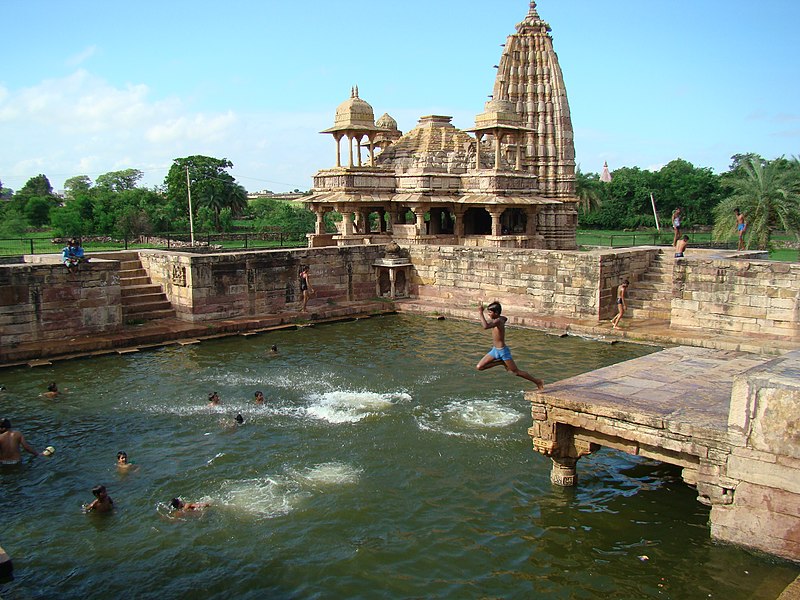- Private car and driver in Delhi / India
- +91-8447445445
- info@discoverindiabycar.com sugar.ankit@yahoo.com
 +91-9818434712
+91-9818434712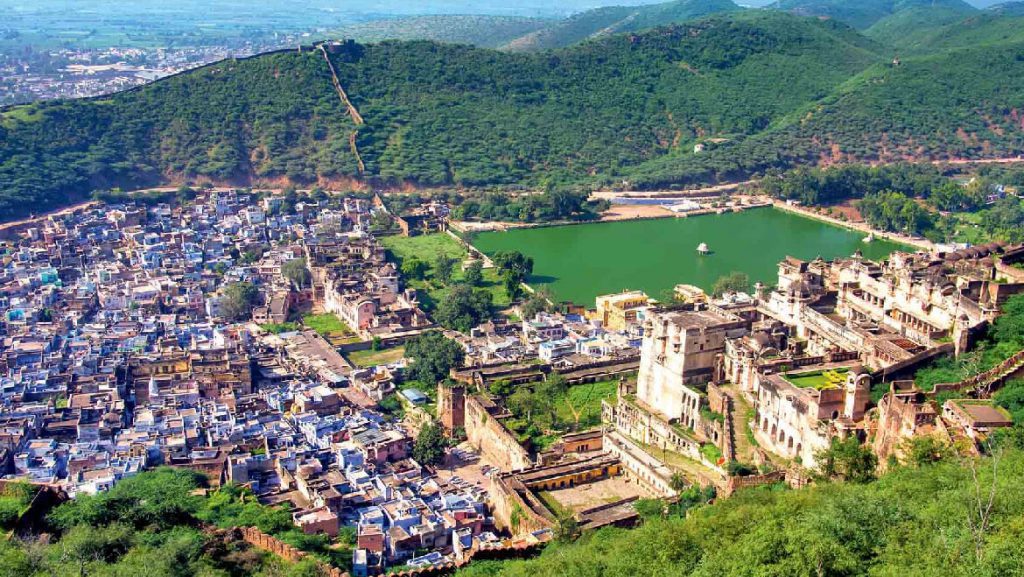
Bundi
The city of Bundi, which is renowned for having a beautiful past and a hopeful future, is surrounded on three sides by Aravalli hills and encircled by a massive wall with four gateways. Historical landmarks, gorgeous dams and ponds, wild woods, fairs, and festivities serve as metaphors for life in this vibrant city in Rajasthan. The city of Bundi contains fascinating landmarks, such as grand mediaeval forts, palaces, havelis, temples with lovely stone idols, and “chattris” with carved pillars, which add to its beauty. It also boasts a charming lake in the middle of the town. Bundi is also noted for its beautiful sculptures and frescoes.
Climate
In the Bundi district, it is often hotter outside. The temperature ranges from 30°C to 5°C in the winter and reaches a maximum of 43°C in the summer. Temperatures as low as 5’C are common during the coldest months. Around 75 cm of rain falls annually on average in this area.
Location
Rajasthan’s Kota district is 36 kilometres away from Bundi district. Bundi’s Tonk district is located in the north, and the city’s western and southern boundaries are shared by Bhilwara and Chittorgarh, respectively.
History and Legends of Bundi
When Sultan Mohammed Ghauri defeated Prithvi Raj Chauhan in 1193, some Chauhan family members sought refuge in Mewar and joined forces with the Rana there, while the younger members of the clan relocated to the Chambal valley and engaged in battle with Meena and Bhil tribal members to establish their kingdom of Hadoti. At that time, Hada Chauhans, who were decedents of the illustrious Chauhan dynasty, ruled Bundi, which was a component of the Kota kingdom. Later, on either side of the Chambal River in Kota and Bundi, the two Hada Chauhan clans established two independent republics.
How to Travel Bundi ?
You can travel Bundi by private car and driver from Delhi. Discover India By car provide best tour packages for Bundi. One the the best tour package for Bundi by private care and driver is Heart of India Tour package by discover India by car.
Places to Visit in Bundi
A Sukh Mahal
On the Sukh Sagar Lake, this beautiful summer mansion is encircled by luxuriant green gardens. It is thought that this location and the former palace of Bundi are connected by an ancient tunnel.
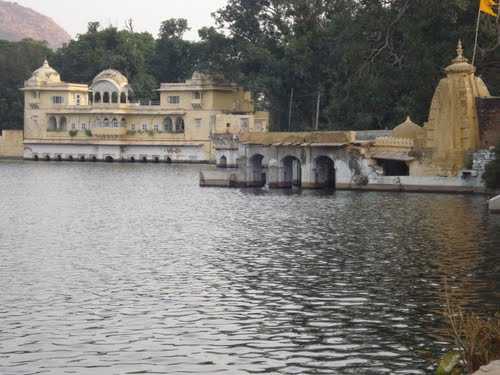
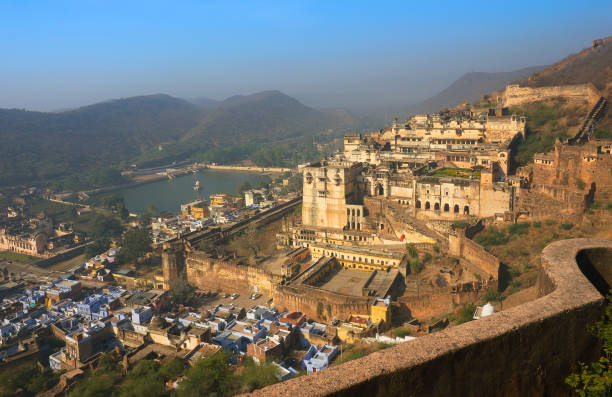
Taragarh to Bundi
It was founded here in 1354 AD. One of Rajasthan’s most stunning forts is the fort. A magnificent white fort with a sizable reservoir, which originally provided water to the palace, is perched on a heavily forested slope.
Ramgarh
This town, which is 45 kilometres from Bundi, used to be one of the richest towns. This village was established by a great, wealthy Poddar trading family. There is a Shanidev temple in this town.
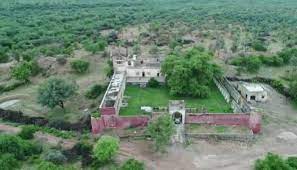
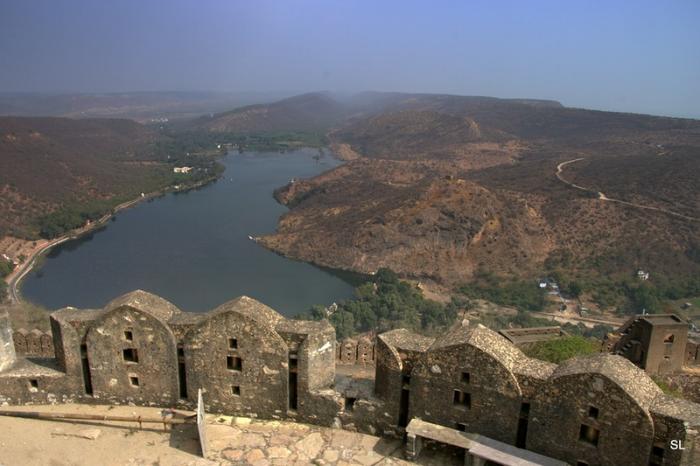
Lake Jait Sagar
This lake was built by Jaita Meena amidst the hills. The fountain is practically a visual treat at night.
Dugari
The wall murals from the Ram temple are still visible in the Dugari fort. There are 65 kilometres between Bundi and the fort.
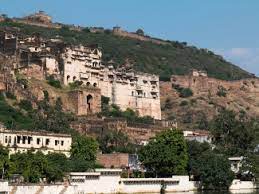
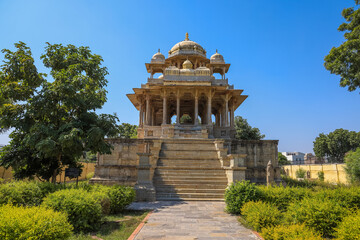
Cenotaph with 84 Pillars
This memorial was built by Rao Anirudh and contains 84 pillars in a single cenotaph along with a Shivlinga.
Chattar Mahal
The most attractive feature of the palace is the Hazari Pole although one must also see Naubat Khana, Hathi Pole and the Diwaan-e-Aam during his visit to the palace.
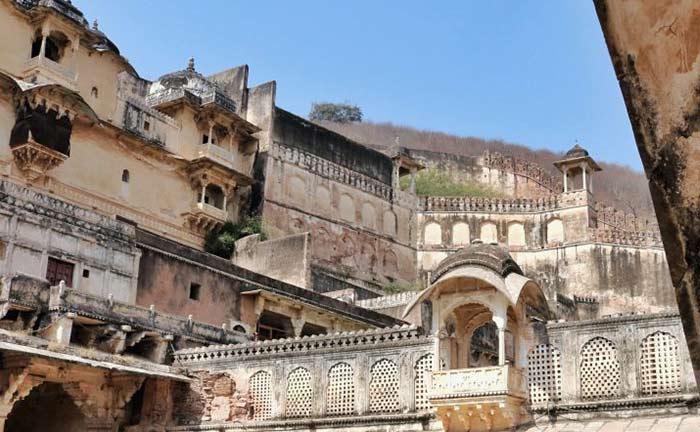

Indragarh
77 kilometres away from Bundi, at the fort of Indragarh, are the Kamaleshwar and Goddess Kali temples. The wall paintings at this palace are very well-known.
Talwas
It is a fort that Raja Ajit Singh constructed, and among its features are the Dhooleshwar Mahadev temple and a lovely waterfall. It is located 53 kilometres away from Bundi.

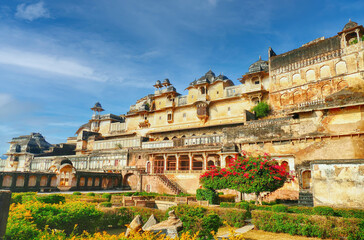
Palace Bundi
With gorgeous frescoes, Bundi Palace is a prime example of Rajput architecture.
Rameshwaram
It is a Lord Shiva cave shrine encircled by Aravalli hills.
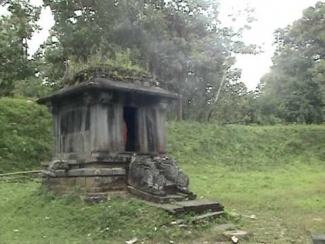
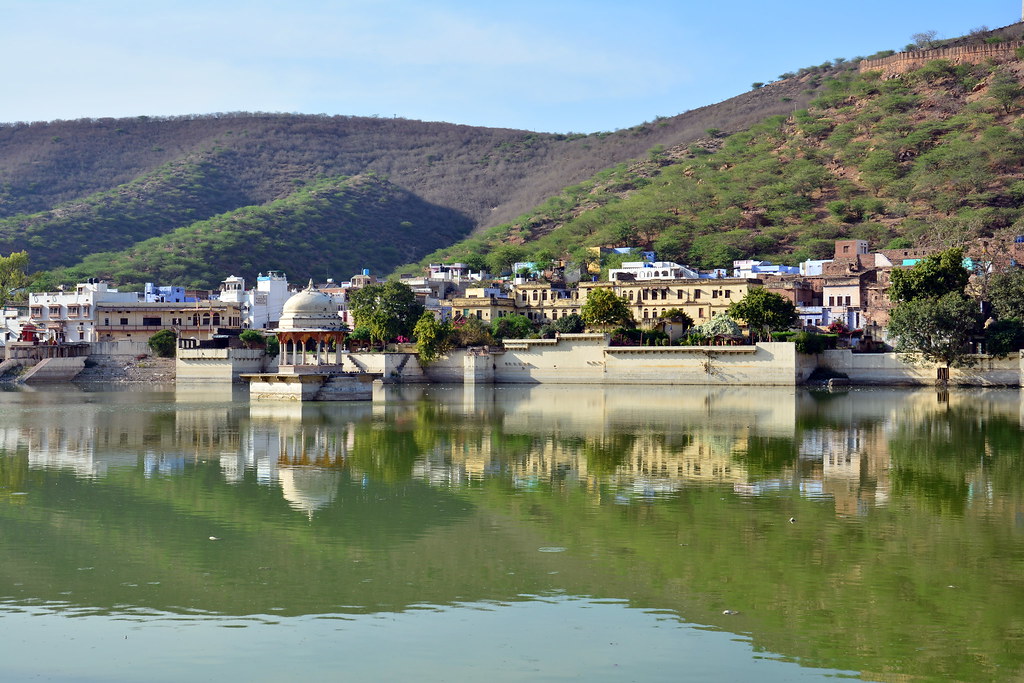
Sagar Phool
The former ruler’s current house, this palace features a picture garden and an artificial tank.
Raniji ki Baori
In the year 1699 AD, Raniji ki Baori Rani Nathawati dug this 46 m deep well. It has a great gate and some exquisite sculpture.
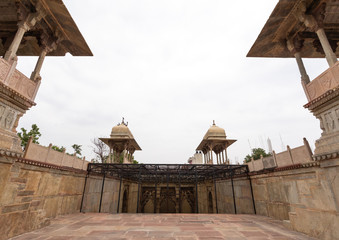
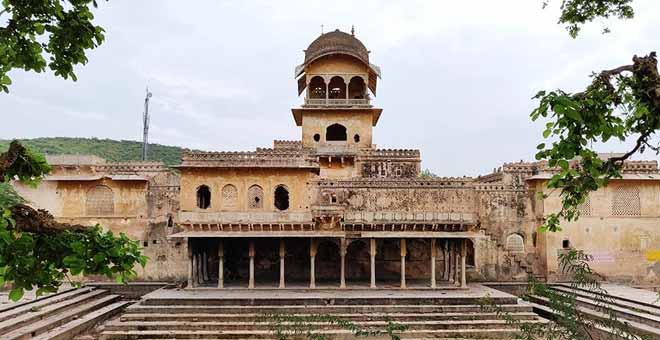
Burj Shikar
The Bundi kings’ preferred hunting location was there. Today, it serves as a well-known picnic area.
Sagar Nawal
This lake, visible from the fort includes a temple dedicated to Varuna, the water god submerged into water at the centre of the lake. In this lake, one can see the city’s fort and several palaces in reflection.
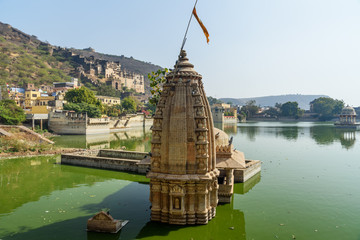
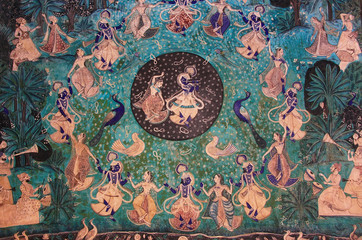
Chitrashala
This palace is renowned for its ornate, vibrant wall murals that portray episodes from the Raagmala and the Raasleela. A wonderful pavilion and a gallery of tiny frescoes are also inside.
Keshavraipatan
The Keshavji temple is the main attraction in this historic city, which is 45 kilometres from Bundi. The temple was built by Maharaja Shastrusal in the year 1601 AD and is renowned for its distinctive architecture. A Jain temple is also located in the town.
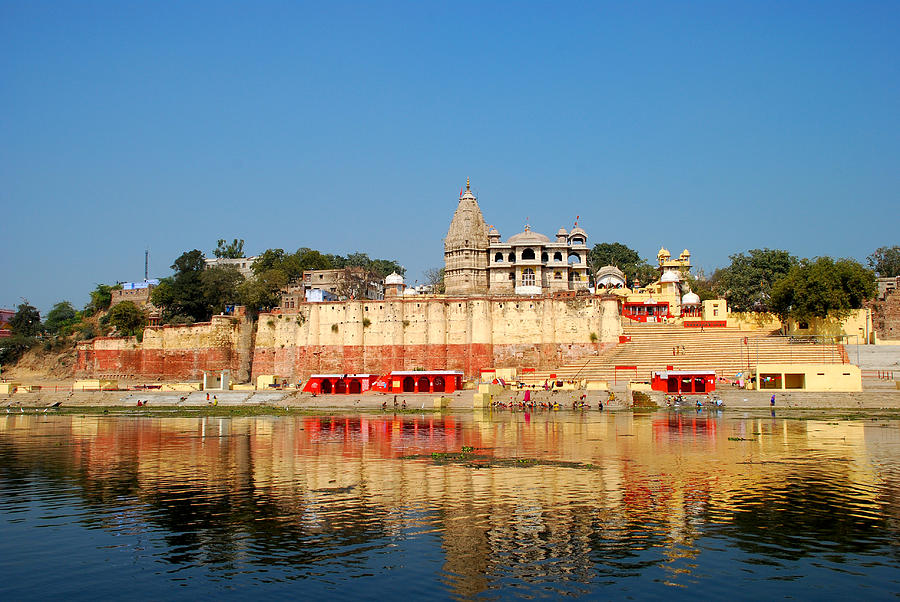
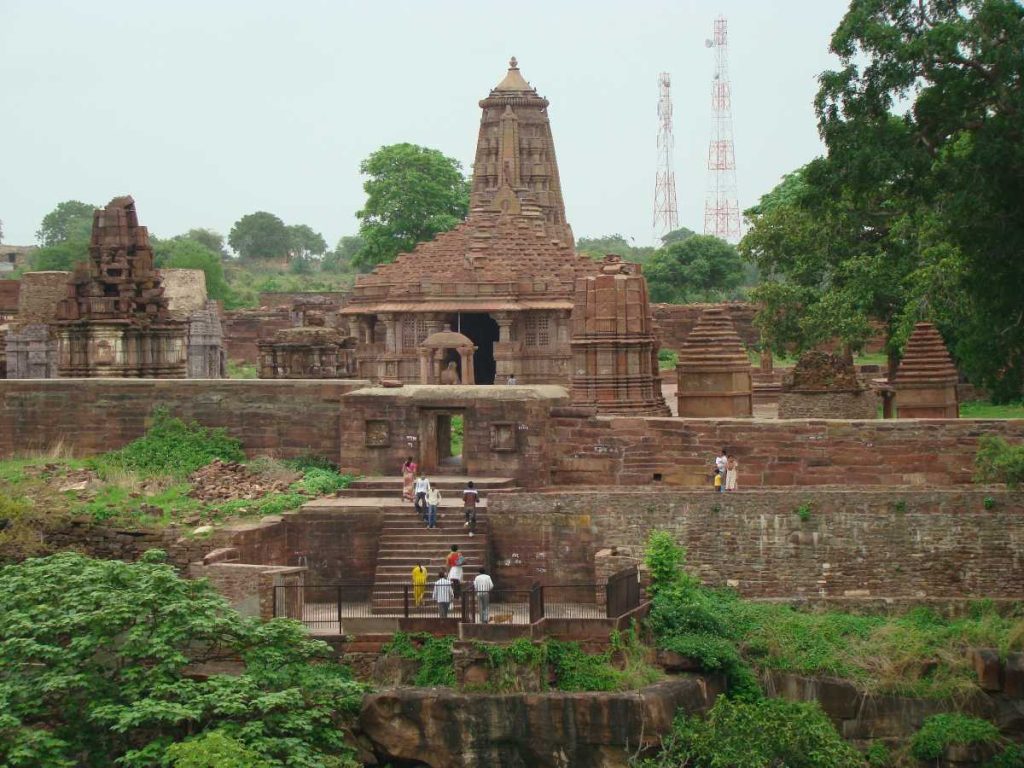
Menal
The Menal River plunges into a vast valley that is 122 metres deep after flowing over a granite slab bed. The temple complex has intriguing carvings on the walls of the shrine that feature numerous Hindu deities on the opposite side of the damaged wall. The Chittaurgarh-Bundi Road is where it is situated. This location is located 70 kilometres from Bundi.
Bijolia
The historic town and fort of Bijolia, which is situated on the Bundi-Chittorgarh road, is 50 kilometres from Bundi. A big temple dedicated to Lord Shiva is located in the middle of a high, paved courtyard on the fort’s side, with a beautiful statue of Lord Ganesha standing at the entrance. The temple is accessible by a carved arch.
